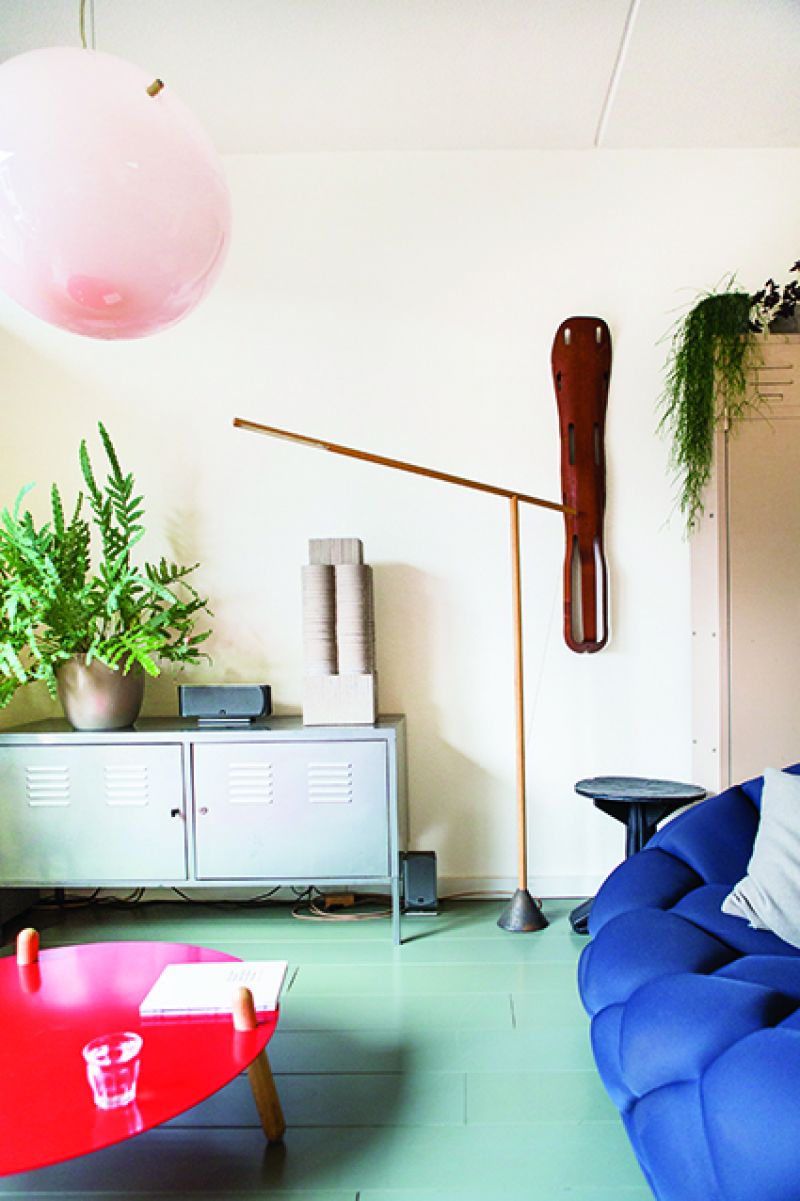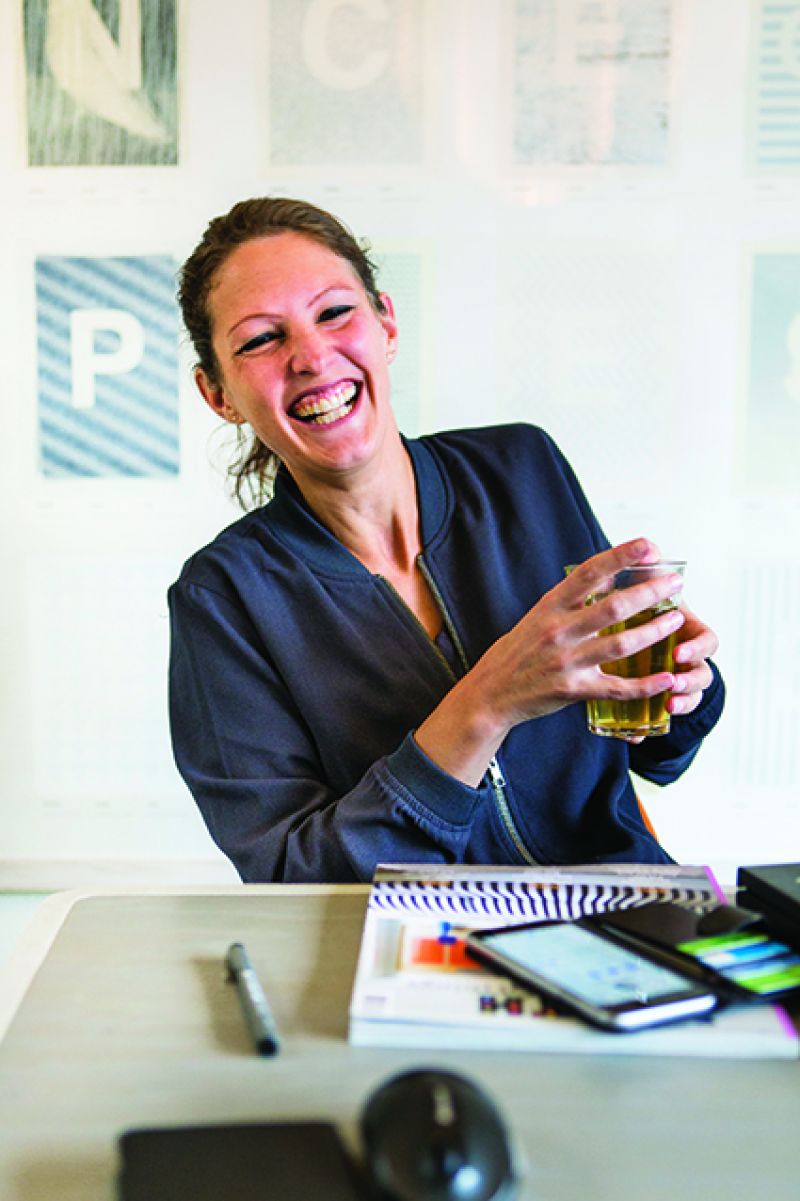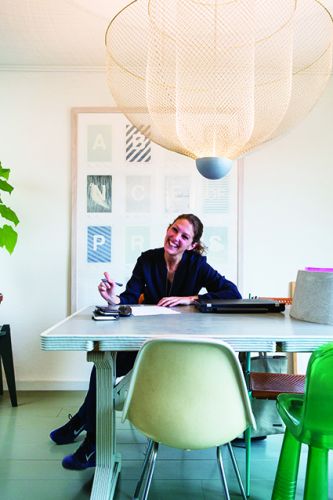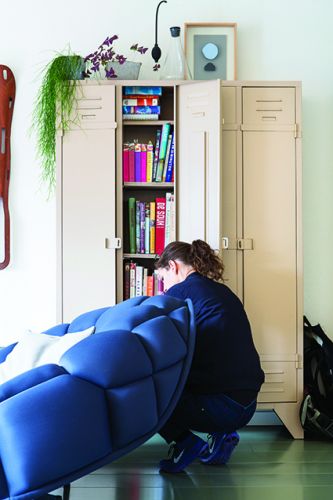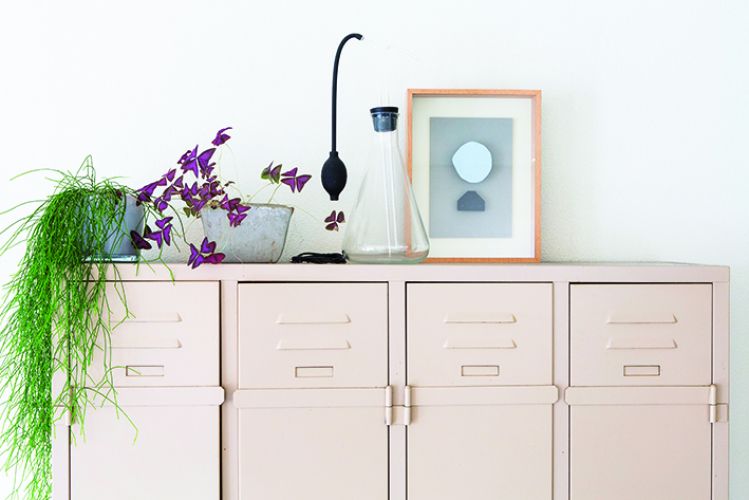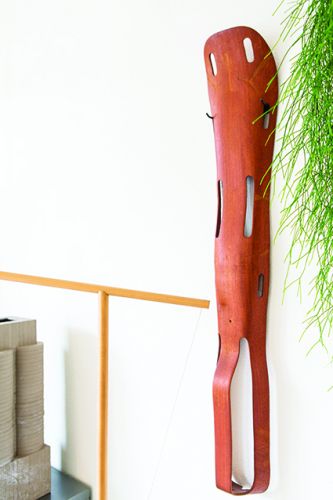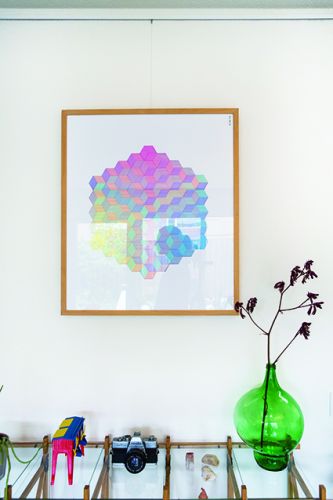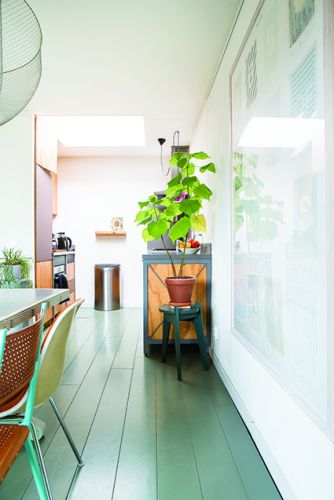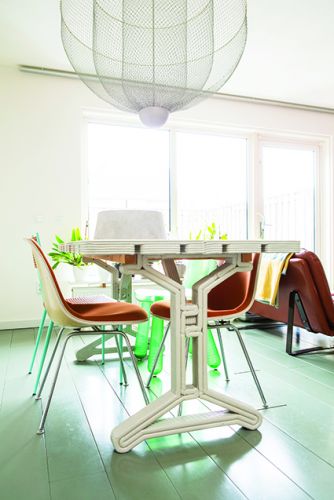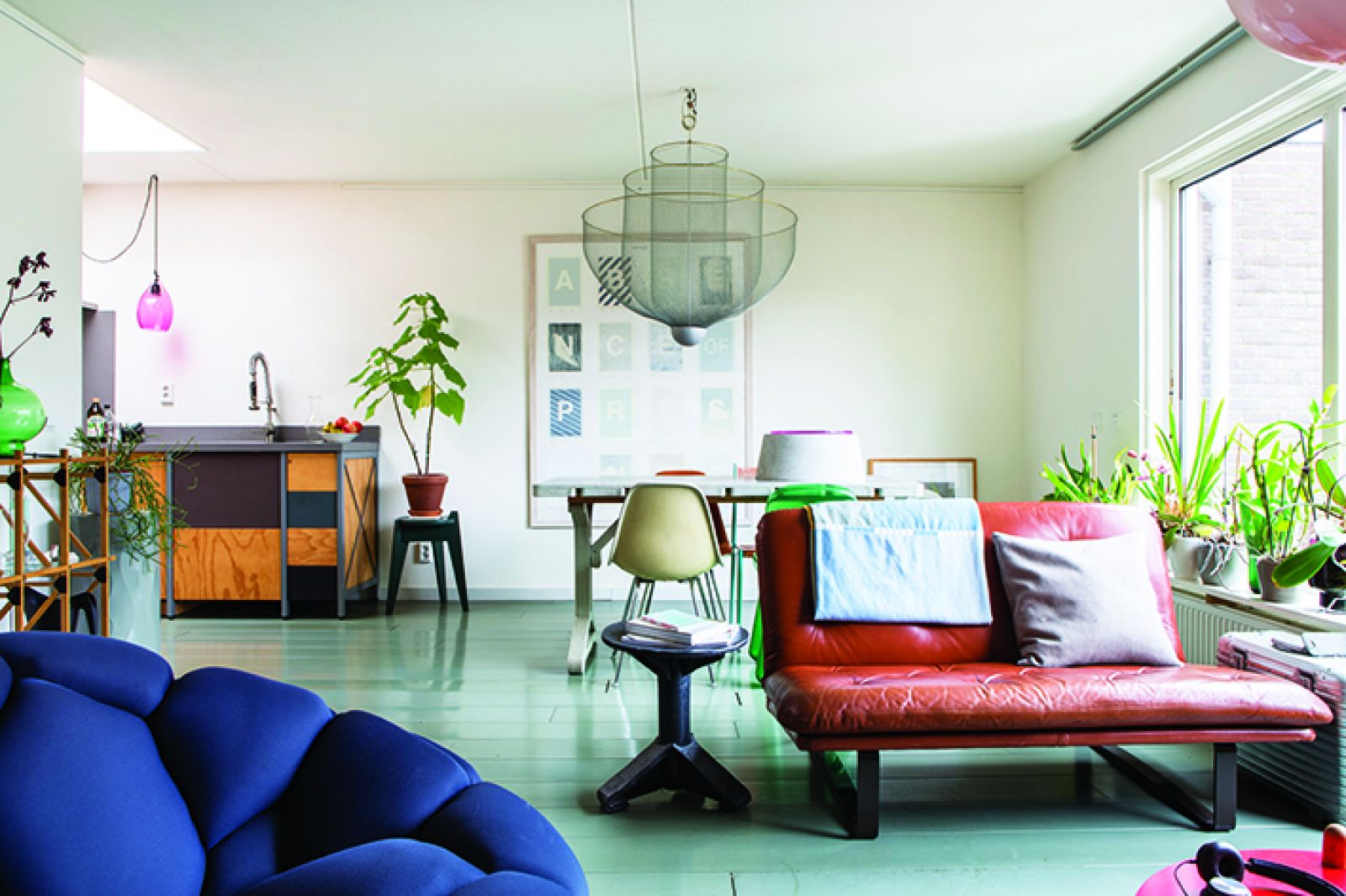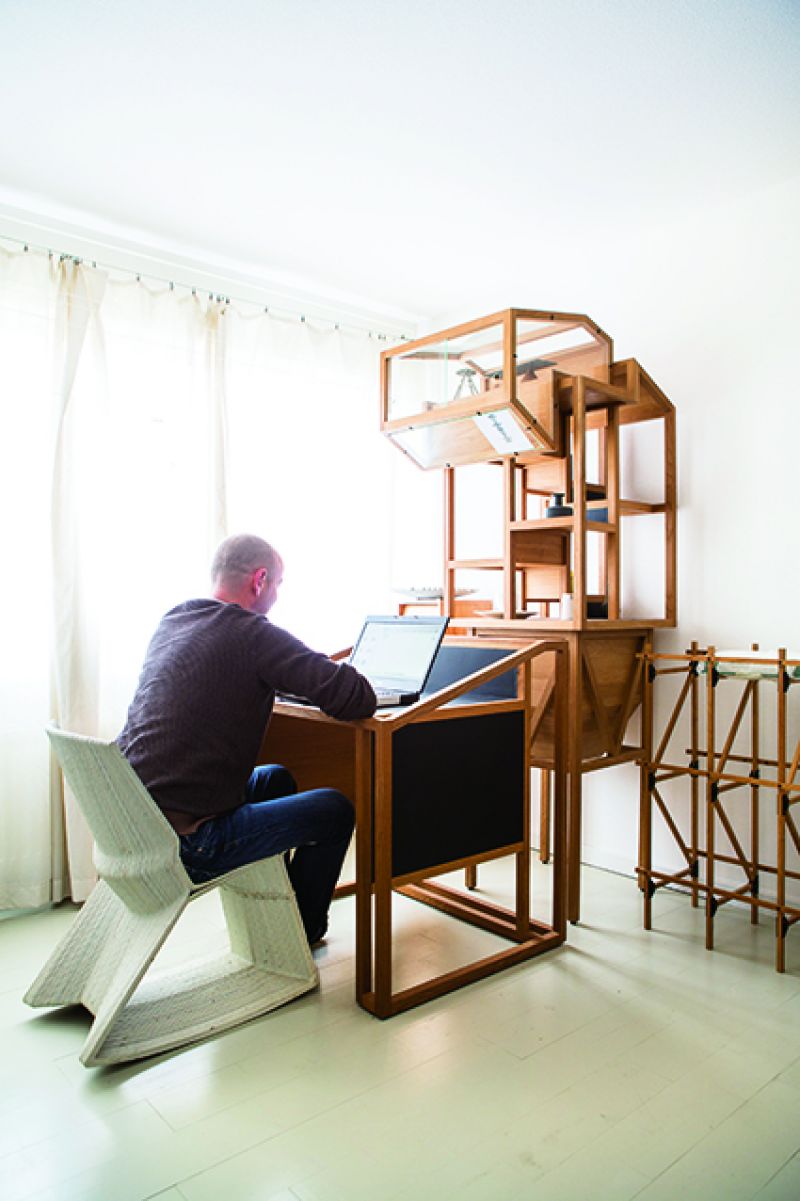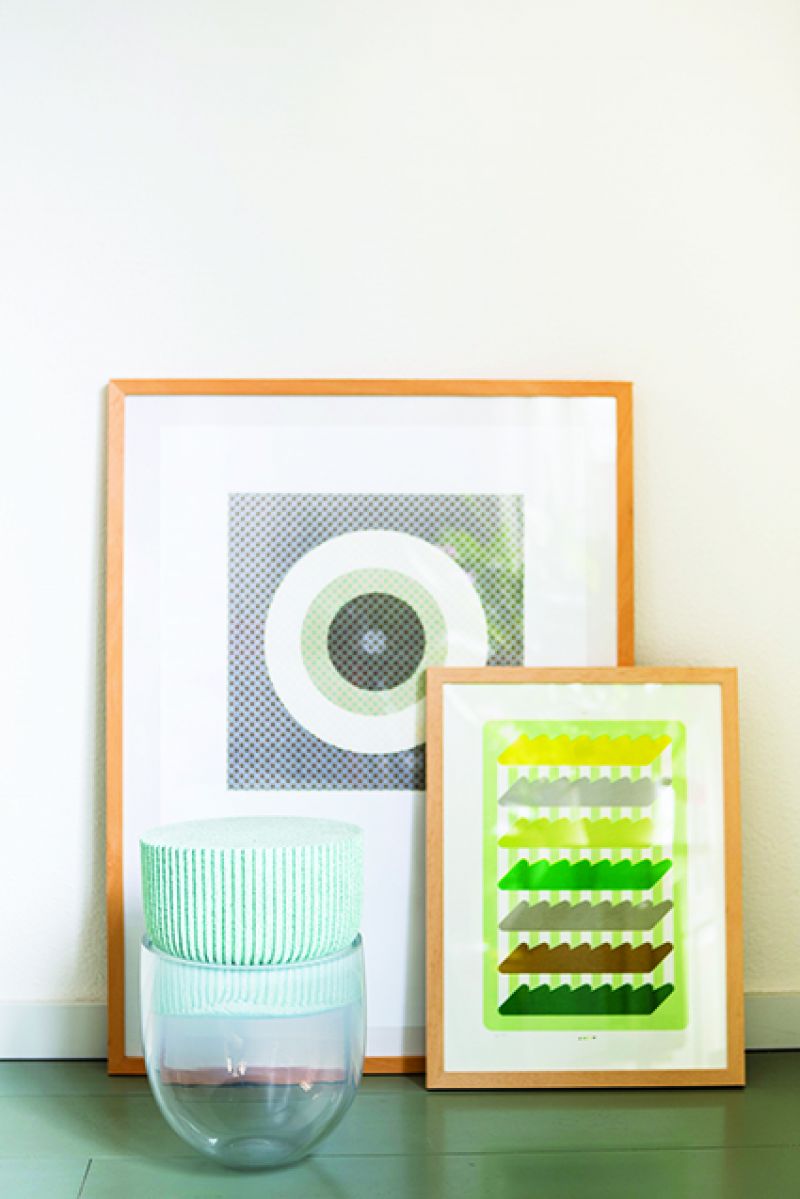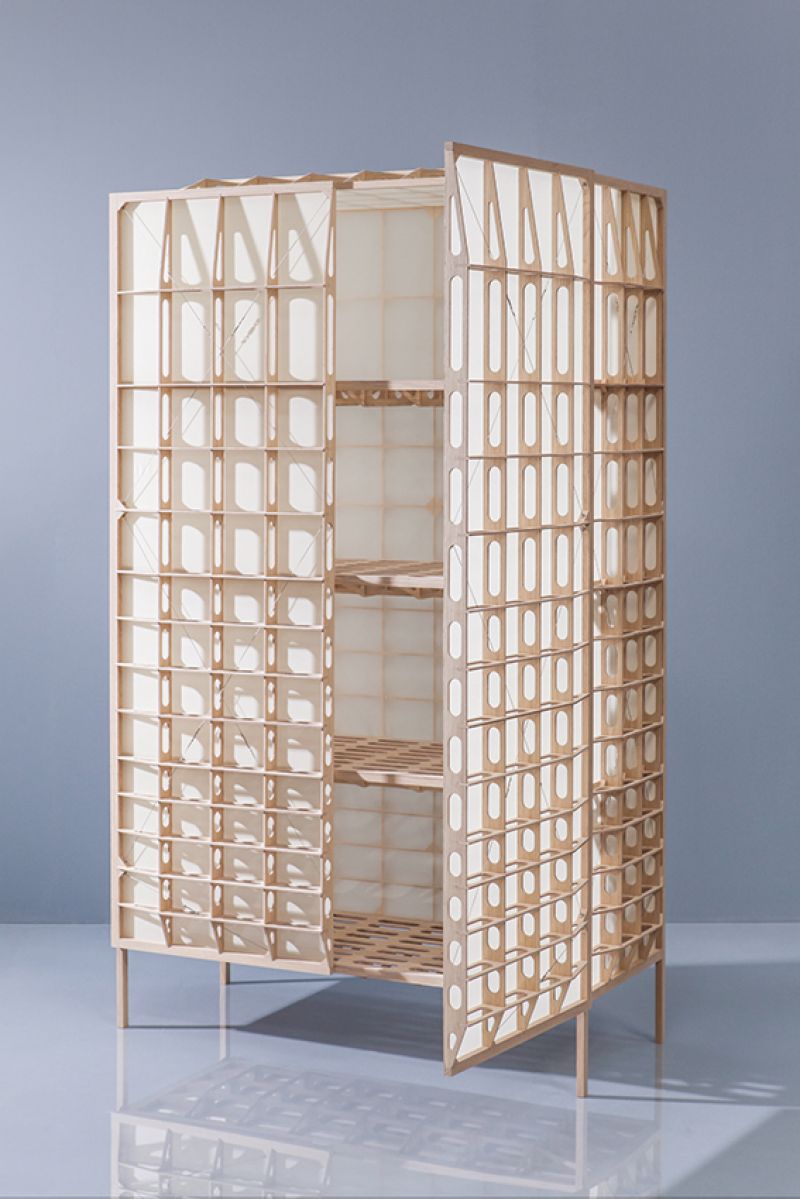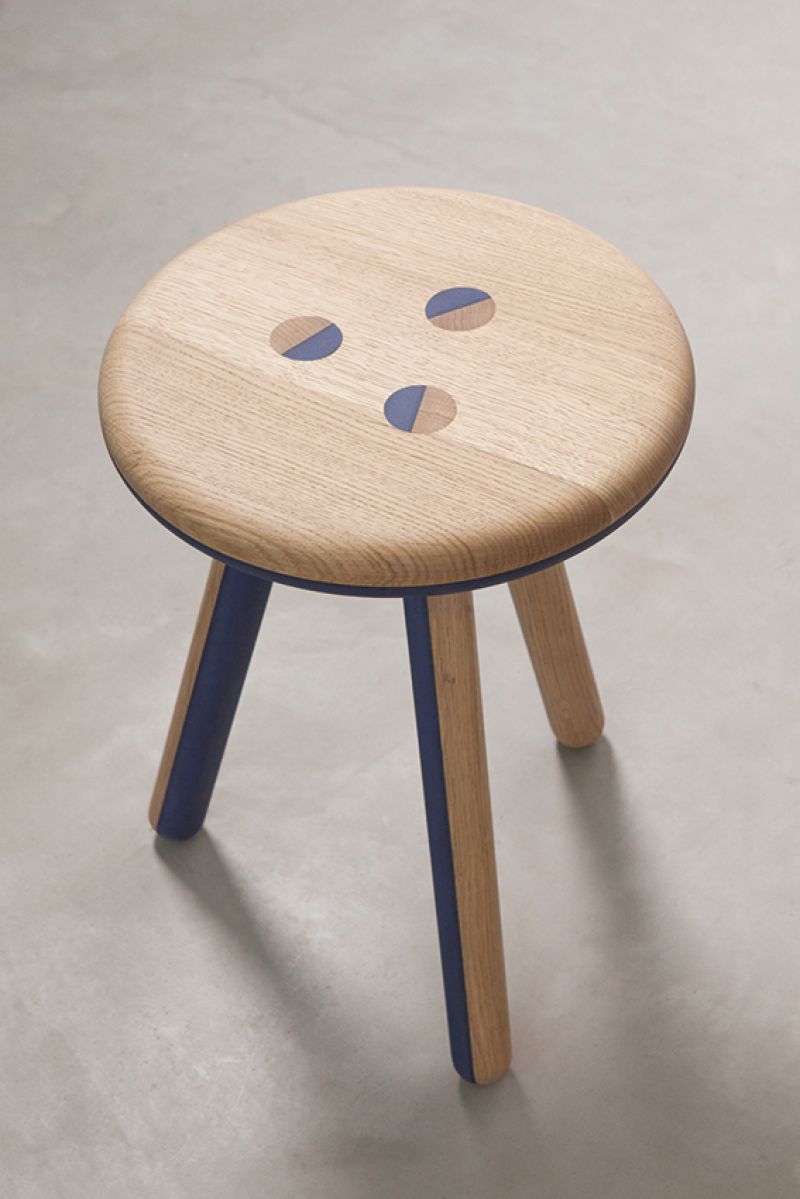Mieke Meijer (1982) studied at the Design Academy Eindhoven and Roy Letterlé (1978) studied structural engineering at PTH Eindhoven. Since 2008 they make up Studio Mieke Meijer. The two also have teaching jobs.
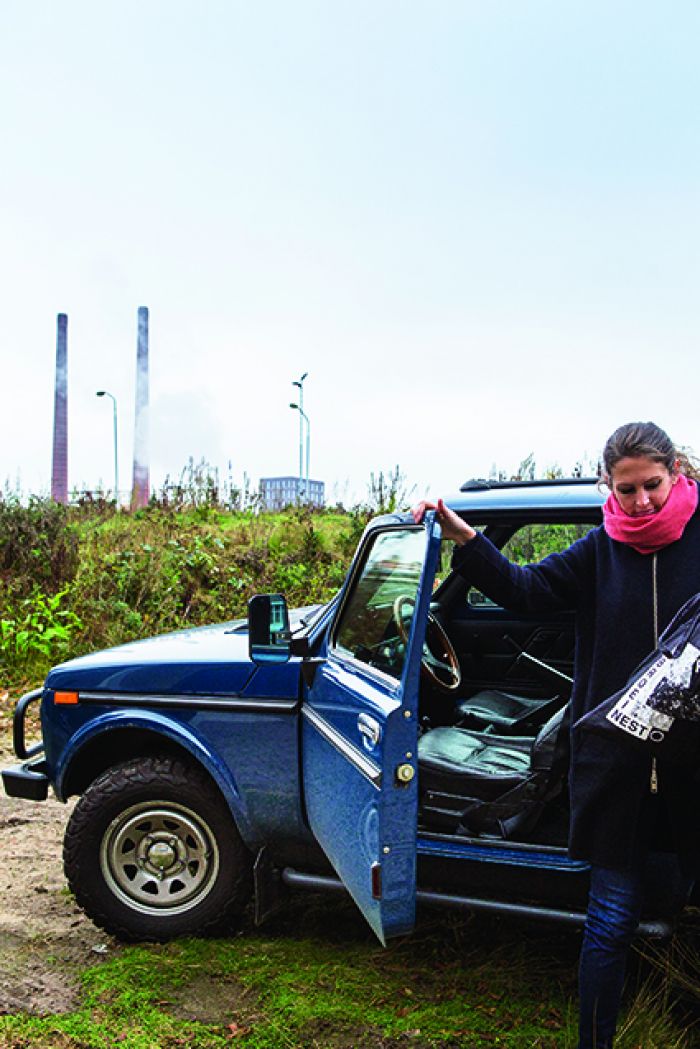
Mieke Meijer
Mieke Meijer and Roy Letterlé eat, drink and breathe design. The duo behind Studio Mieke Meijer draws the inspiration for their designs from the immediate surroundings. Everything they produce at their workshop is tested at home.
Welcome to our old-folks neighbourhood,’ Mieke Meijer says jokingly when she opens the door. There is indeed a sleepy calm in the Eindhoven area of Woensel and it’s a typical senior citizen’s neighbourhood. But when the local housing association started to sell buildings in 2012 to rejuvenate the area, Meijer and her partner Roy Letterlé jumped at the chance. They were ready for something of their own. ‘Since we’re already always making things, we didn’t want to have to renovate a house,’ Letterlé explains their practical decision.
Still, the duo did more work on the 1990s maisonette than the average person moving in would’ve done. They removed the wallpaper, took out the floors ‘because we hate laminate flooring’ and replaced them with second-hand boards and buried the tiles in the hallway under poured concrete.
Boxes in a box
Even the kitchen couldn’t escape the sledgehammer. ‘We didn’t understand why those plywood things are so wildly expensive and we figured this was a good occasion to design one ourselves,’ says Meijer. Letterlé adds: ‘A kitchen is basically a collection of boxes in a box. We decided to take away the plywood shell and to hang the drawers in a steel frame. When our friends saw the result, they wanted it too. We now build a kitchen once in a while.’
It happens a lot. A garden-variety problem almost automatically evolves into a project. Meijer always starts sketching and testing right away and Letterlé is the one who makes schedules and models. The actual work is done in a warehouse at Strijp T (an Eindhoven business district). It’s a short drive from home in their Lada Niva, the Spartan four-wheel drive of Russian design they like to use for off-road trips around Eindhoven on the weekends. The hall that Studio Mieke Meijer shares with Os Δ Oos and Daphna Laurens, is 12 m high and has an impressive collection of equipment. There’s a traditional lathe, a CNC milling machine, a kiln and even a Japanese machine that cuts paper-thin slices of wood. Just about everything designed by Studio Mieke Meijer is made here, to subsequently be tested at home.
A preference for materials and experiment is reflected in the interior. This applies to the homemade kitchen, but also to Chris Kabel’s pink Bubblicious hanging lamp and the Elephant Skin stools by Dirk Vander Kooij. Hanging on the wall is work by Raw Color –17 different printing techniques were used in the production.
L \ A 2008 visit to the old mines in the Ruhr Region has had a lasting effect on Studio Mieke Meijer’s imagery. Gravel Plant 01 is a gravel factory scaled-down to a piece of furniture. R \ Work by other designers, often traded: a vase by Roos Gomperts, a Riso print by Sigrid Calon, and a screen print with oxidized metals by EDHV.
prototypes
Some designs don’t make it past the prototype stage. Such as the Balance Lamp, an elegant reading lamp consisting of two loose bars connected by a single thread. ‘We made five different versions, but consumers couldn’t manage it and kept pulling it apart,’ Letterlé tells us. ‘It’s a beautiful lamp but it’s still a flawed product.’ Meijer says: ’Roy wanted to throw it out three years ago but I just can’t let it go.’ One of their successful products is room divider Frameworks. The timbered framework with little glass shelves has become a Studio Mieke Meijer classic. ‘It’s the first one of our designs based on scalability,’ says Meijer. ‘We can make a small one but we’ve also made a version that was 7 m long. It’s very popular with people who own a collection of objects. One customer used it for a vertical garden.’
L \ The Airframe cabinet weighs only 18 kg and can be dissembled to such a size that it can travel in the baggage compartment of an airplane. The skin is made of material that is also used in gliders. The construction on the outside is reminiscent of the Centre Pompidou in Paris. R \ The Equivalent Stool is made of coloured MDF and oak wood, as equal parts. Meijer and Letterlé call it a ‘little Saturday-afternoon-project’.
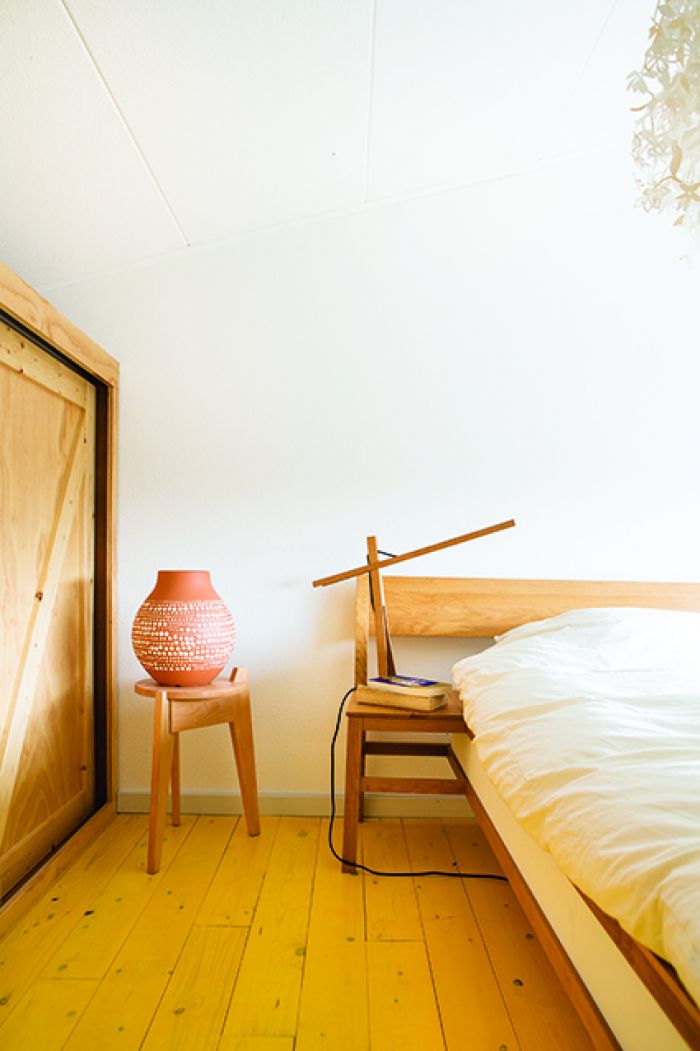
They also designed the bed because ‘most beds are so boring’. The floor is made of pinewood sandwich panels that the designers came across during a project at Depot Basel. ‘The yellow brings the sun into the house.’
Aesthetics
The room divider has a permanent spot in the living room, but the rest of the interior doesn’t. New things are added continuously, subordinating size and comfort to aesthetics. Almost everything’s a prototype, a second-hand piece or a showroom model, usually traded for some of their own work. Centre stage is the giant chair by the Bouroullec brothers; next to that a little old bench by Kho Liang Ie, who passed away in 1975. And yes, there’s even an Ikea product, the metal PS cabinet. ‘That ugly thing’s been following us around since a couple of moves already,’ Meijer despairs. ‘But we still don’t have a good replacement. That’s on our bucket list: designing a closed cabinet.’ A side from functioning as a lab for their own designs, the house is also a showcase for creations by designer friends. The first rocking chair Dirk Vander Kooij ever made with his 3-D printer: ‘We admire his monomaniacal way of working.’ The glass vase with the foam rubber stopper by Roos Gomperts. An early version of Rick Tegelaar’s Meshmatics lamp that is currently sold by Moooi. Hanging in an honorary place in the living room, a bit like a relic and a mascot simultaneously, is a leg splint. This design from 1942, by Charles and Ray Eames, was revolutionary in the use of moulded plywood and a forerunner of their famous chairs. The origins of this copy are equally exceptional. This mahogany version was owned for a long time by Jim Eppinger, the legendary sales manager of furniture manufacturer Herman Miller. ‘We wrote him a letter to tell him we’ll take good care of it. In case of a fire, it’s the only thing we’d save. The rest is replaceable.’

In the former Philips paper warehouse, Meijer and Letterlé work long hours. Once in a while a new machine is purchased and that subsequently leads to new products.Studio Mieke Meijer developed an innovative solar shading system for Luxaflex last year. Thirteen rods move independently, rolling up or unrolling small polyester tarps, creating a dynamic game of geometric shapes. The design was presented at the Dutch Design Week 2017 as part of Enlighten, the Dutch Invertuals exhibition.
miekemeijer.com
This production was published in WOTH No9. This issue is still available in english via Bruil & van der Staaij. Or get a subscription here!
Dutch versions of WOTH can be ordered in our shop and an NL subscription is available here.
